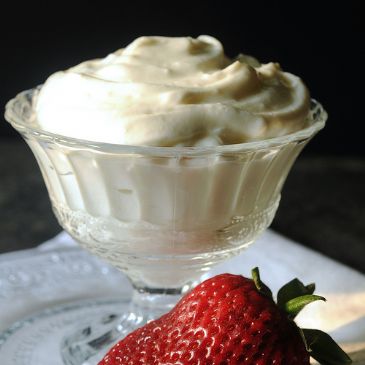The recipe Healthy Homemade Greek Yogurt (fat-free)

Healthy Homemade Greek Yogurt (fat-free) recipe is a Breakfast meal that takes several minutes to make. If you enjoy for Breakfast, you will like Healthy Homemade Greek Yogurt (fat-free)!
Healthy Homemade Greek Yogurt (fat-free)

- What Course Is Healthy Homemade Greek Yogurt (fat-free)?
- How Long Does Healthy Homemade Greek Yogurt (fat-free) Recipe Take To Prepare?
- How Long Does Healthy Homemade Greek Yogurt (fat-free) Recipe Take To Cook?
- How Many Servings Does Healthy Homemade Greek Yogurt (fat-free) Recipe Make?
- What Are The Ingredients For Healthy Homemade Greek Yogurt (fat-free) Recipe?
- How Do I Make Healthy Homemade Greek Yogurt (fat-free)?
- What's The Nutritional Info For Healthy Homemade Greek Yogurt (fat-free)?
- What Type Of Cuisine Is Healthy Homemade Greek Yogurt (fat-free)?
| Healthy Homemade Greek Yogurt (fat-free) |
|---|
|
From Salad In A Jar: http://bit.ly/fqfw0g I make this all the time and it is great! Wanted to input it so that I could get an accurate calorie count per serving. The next time I make it, I will weigh it out in servings and edit the serving size. 
What Course Is Healthy Homemade Greek Yogurt (fat-free)?Healthy Homemade Greek Yogurt (fat-free) is for Breakfast. How Long Does Healthy Homemade Greek Yogurt (fat-free) Recipe Take To Prepare?Healthy Homemade Greek Yogurt (fat-free) takes several minutes to prepare. How Long Does Healthy Homemade Greek Yogurt (fat-free) Recipe Take To Cook?Healthy Homemade Greek Yogurt (fat-free) takes several minutes to cook. How Many Servings Does Healthy Homemade Greek Yogurt (fat-free) Recipe Make?Healthy Homemade Greek Yogurt (fat-free) makes 1 servings. What Are The Ingredients For Healthy Homemade Greek Yogurt (fat-free) Recipe?The ingredients for Healthy Homemade Greek Yogurt (fat-free) are: 2 quarts nonfat milk1/2 cup nonfat dry milk 1 tbsp plain, nonfat greek yogurt (starter) How Do I Make Healthy Homemade Greek Yogurt (fat-free)?Here is how you make Healthy Homemade Greek Yogurt (fat-free): First: Fill Pyrex batter bowl or 2-quart glass container with 2 quarts of milk. Use skim for fat-free.) Microwave till bubbles begin to appear around the edge. Temperature should reach 175-180 degrees after you stir it. (In my microwave, it takes 17 minutes on HIGH). Do not skip this step. It is important to unravel the proteins so they will behave during the incubation process.Stir milk once or twice during the heating process to prevent skin from forming. If a skin does form, remove it.Second: Allow milk to cool until temperature drops to between 110 and 120 degrees. This can take 30-45 minutes. Use a cooking thermometer to check. I like this one with an alarm that goes off when mixture reaches a preset temperature. If you are in a hurry, fill sink or large bowl with ice and set the container of milk in it.Third: Whisk in 1/4 to 1/2 cup nonfat dried milk and 1-2 teaspoons yogurt as a starter from your favorite brand of plain yogurt (but it must contain live cultures and should not have any additives). You may use yogurt from a previous batch of your own homemade yogurt. I started out with nonfat Fage Greek yogurt. If you buy it, take note of the price and then pat yourself on the back for all the money you saved by making your own.Editor?s Note: I have now been using my own yogurt as a starter for over six months. It seems to get better and better despite what some people say about using it only three or four times or even just once. Since I make yogurt at least twice a week, it never has a chance to get old.Fourth: Cover milk and place in a conventional oven that has been preheated for only one minute. Wrap in towels. Turn the oven light on. In a gas oven, the pilot light may keep it warm enough. Other ways to keep the yogurt warm during incubation include an ice chest, heating pad, electric yogurt maker or an unusually warm spot in the house. If it is a hot summer day in Texas, just stick it on the porch! Let sit for 6-10 hours but it may need up to 11-14 hours. It?s difficult to make a hard and fast rule here since each environment is slightly different.Editor?s Note: The more I hear from people who have tried this, the more I?m convinced of the importance of keeping a steady incubation temperature around 100 degrees. Many newer ovens can be set to 100-110 degrees which is perfect.How can you tell when it?s finished? Good question and the hardest part of the entire process. You will learn by experience when it ?looks right.? It should be set?as in slightly gelatinous, even though you have put no gelatin in it. There will most likely be a watery, slightly yellow liquid on top called whey. I haven?t figured out a good use for the whey but let me know if you think of one.At this point you could chill the yogurt and eat as is. It is your choice to pour off the whey or stir it back in. Straining makes the yogurt thicker and less tart resulting in Greek yogurt.From regular yogurt to Greek yogurt:Fifth: Very carefully pour yogurt into a bouillon strainer aka chinois. This is where I part company with other directions I?ve seen for Greek yogurt. Most suggest using several layers of cheesecloth to line a strainer or even a coffee filter (for a small amount). What a mess to clean up!Although a bouillon strainer or chinois is pricey, it is well worth it. You will lose very few solids if yogurt has set up thick enough. If the solids flow through the strainer, you need to put it back in the oven for a few hours to thicken. (See editor?s note below and troubleshooting tips at the end of this post). Just to be clear, a bouillon strainer has a very, very fine mesh. The only place I know to purchase one is a restaurant supply or look online. A standard grocery store strainer is not fine enough.Editor?s Note: Because I know the process so well at my house, failed yogurt at this point usually means I have problems with the starter. Either I have killed it with too high of temperature or it was too old. So I simply stir in more starter and reincubate.Let yogurt sit in the strainer till the yogurt is reduced by approximately half. Time will vary according to the thickness of the yogurt out of the oven and your own preference regarding texture and sourness. Tip the strainer or stir very gently if whey has pooled on top while straining.Empty whey from batter bowl and pour yogurt out of strainer back into the original bowl. Use a good whisk to beat until smooth. (Tip: Rinse the strainer immediately. Do no let any residue from the yogurt dry on the mesh or it may be impossible to get clean. However, they clean up beautifully after a trip through the dishwasher.)Pour into glass jars as is. Mixture will be very thick when cold (and reportedly keeps longer when thicker). Number of Servings: 1Recipe submitted by SparkPeople user JENNIFERCLEMENT.What's The Nutritional Info For Healthy Homemade Greek Yogurt (fat-free)?The nutritional information for Healthy Homemade Greek Yogurt (fat-free) is:
|
More Online Recipes
Appetizers, Soups & Salads, Asian, Beef & Pork, Birthday, Breakfast, Brunch, Christmas, Cookout, Dessert, Dinner, Fish, French, German, Indian, Italian, Kids, Lunch, Mexican, Party, Picnic, Poultry, Salad, Sandwich, Side Dish, Side Items, Slow Cooker, Snack, Soup, Spanish, Thanksgiving, Vegetarian